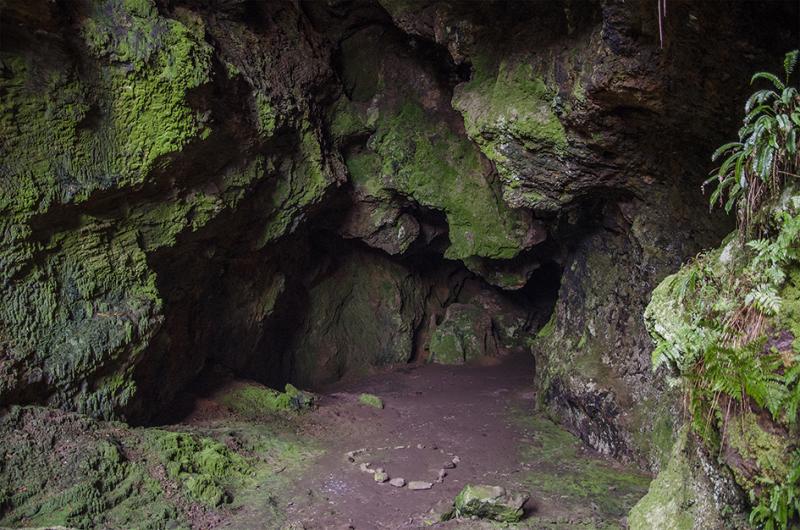La Cova das Choias is located in Biduedo, in the parish of Óutara. The cave is a natural grotto, one of the most unique places in the Lemos region. It is possible that the cave was altered by humans during the Roman era in order to extract iron ore. It is known that it was made use of intensively, especially in the 16th and 17th Century, supplying the blacksmiths of the region, principally the blacksmith in Biduedo, which no longer exists.
Nowadays the cave hosts a natural wealth of extraordinary importance due to its vulnerable status: the luminescent moss and a population of different bat colonies, unique in Galicia. The moss, which gives the cave its green colouring, is peculiar in the fact that it has filaments that reflect the emerald green light, producing the illusion of luminescence. The presence of this moss in the Iberian Peninsula is only documented in a dozen locations. Because of the fragility of the habitats where it is found, this species is included in the Galician List of Threatened Species as a vulnerable species. It is forbidden to remove or step on the moss in order to preserve the dark and humid conditions that it needs and so that future generations can also admire it.

The name of the cave, las Choias, comes from the birds that live in it. These birds belong to the crow family and traditionally inhabited the cave. A few years ago it was thought that they had disappeared, but owing to the measures that have been taken to conserve the different species, these birds can now be seen again in the cave. The cave is also home to different bat species, including the cave bat that is found here in the largest known colony in Galicia and the greater horseshoe bat that inhabits the cave in autumn. These species are classified as vulnerable and the presence of humans could be harmful for the conservation of these colonies.
You can access the cave through a large entrance which is more than 30 metres high. The cavities form 3 levels with more than 200 metres of passages with different galleries leading to dead ends, as well as artificial galleries made for iron ore extraction. The access to the cave is only permitted with a guided visit organised through the council. You can only access the main entrance of the cave, as without experience in speleology the access to the grotto is dangerous.

